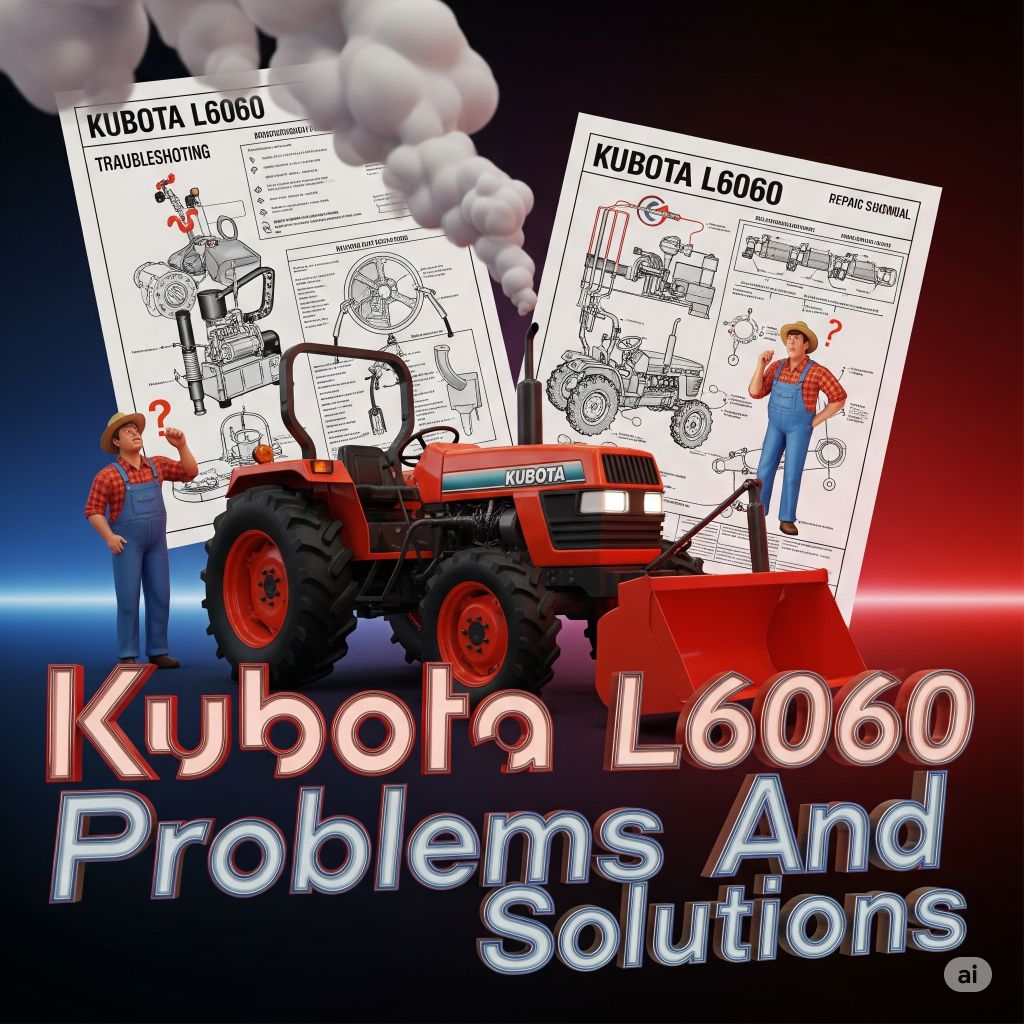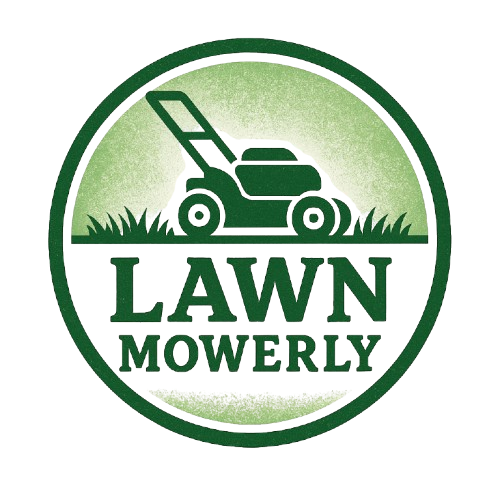
The Kubota L6060 is a premium compact tractor, widely praised for its power, comfort, and versatility. It’s popular for tasks ranging from landscaping to agricultural work. However, like any complex machine, the L6060 is not immune to problems. Understanding common issues, their symptoms, and proven solutions can save time, money, and frustration.
This guide aims to equip you with actionable knowledge, combining owner experience, expert advice, and demonstrative diagrams for clearer understanding.
Overview of the Kubota L6060
The Kubota L6060 Key Specs:
- Engine: 63 HP, Turbocharged diesel
- Transmission: Hydrostatic (HST+)
- 4WD, Optional cab with HVAC
- PTO: 51 HP (approx.)
- Weight: 4,180 lbs. (cab model)
Intended use: Loader work, mowing, snow removal, tilling, small-scale farming.
2. Engine Problems and Solutions
2.1 Hard Starting or No Start
Common Causes:
- Air in the fuel system
- Blocked fuel filter
- Weak or faulty battery
- Glow plug malfunction
- Low engine compression
Solutions:
- Air Removal: Bleed the fuel system using manufacturer procedure.
- Fuel Filter: Inspect and replace clogged filters periodically.
- Battery: Check for charge and replace if voltage is consistently low.
- Glow Plugs: Test using a multimeter; replace defective plugs.
- Compression: Low compression typically requires professional service—can indicate wear of piston rings or valves.
Tip: Use winter-grade diesel or additives in cold climates to prevent gelling.
2.2 Overheating
Common Causes:
- Dirty or blocked radiator fins
- Low coolant level or wrong coolant mixture
- Faulty thermostat or radiator cap
Solutions:
- Radiator Cleaning: Use compressed air to blow out debris and dirt.
- Coolant Check: Ensure coolant is at the recommended level and concentration (usually 50/50 glycol mix).
- Thermostat/Radiator Cap: Replace these components if faulty; very common wear items.
2.3 Power Loss or Engine Stalling
Common Causes:
- Clogged air filter restricting airflow
- Fuel starvation or contaminated fuel
- Faulty fuel injection pump
Solutions:
- Air Filter: Replace or clean every 50–100 hours, more in dusty environments.
- Fuel System: Drain tank and lines if contamination is suspected. Use clean, fresh diesel fuel.
- Injection Pump: Professional calibration or rebuild may be required. Only attempt this if you are experienced and have the right tools.
3. Transmission and Drivetrain Problems
3.1 Hydrostatic Transmission (HST) Hesitation or Noise
Common Causes:
- Low or dirty HST fluid
- Air in hydraulic lines
- Faulty pedal linkage
- Worn hydrostatic unit
Solutions:
- HST Fluid & Filter: Replace fluid and filters every 400 hours or as per manual.
- Bleed System: Remove air from the system by cycling the controls fully.
- Linkage Inspection: Lubricate and adjust pedal linkages if movement is not smooth.
- Hydrostatic Unit Wear: Professional rebuild may be necessary; not usually DIY.
3.2 4WD Not Engaging or Disengaging
Common Causes:
- Damaged front drive shaft
- Worn shift lever or linkage
- Internal gearbox damage
Solutions:
- Front Drive Shaft: Inspect for damage or lose bolts.
- Linkages: Clean, lubricate, and inspect for bends or binding.
- Gearbox: If 4WD grinds or won’t engage, internal parts may need inspection by a qualified technician.
4. Electrical System Problems
4.1 Dead Battery, Poor Charging
Common Causes:
- Old battery or bad connections
- Failing alternator
- Loose or corroded cables
Solutions:
- Battery: Replace if over 3-5 years old or failing load test.
- Alternator Check: Use a voltmeter—charging voltage should be 13.8–14.5V at battery terminals with tractor running.
- Cable Clean-up: Remove corrosion and tighten all cable clamps.
4.2 Instrument Panel Malfunction
- Moisture or water ingress is a frequent culprit.
- Fuses can also fail, especially when working in wet or muddy conditions.
Solution: Dry instrument clusters thoroughly, replace blown fuses, and seal wiring with dielectric grease to limit moisture intrusion.
5. Hydraulic Problems
5.1 Loader or Implement Moves Slowly
Common Causes:
- Low hydraulic fluid level
- Air in system
- Clogged hydraulic filter
Solutions:
- Fluid Level: Top off using specification-matched Kubota UDT fluid.
- Bleeding: Cycle all controls at idle to purge air.
- Filter: Replace as per service schedule.
5.2 Leaking Hydraulic Lines
- Inspect all hoses for abrasion, cracking, and leaks at couplers.
- Replace any suspect hoses or seals immediately to prevent major fluid loss.
6. PTO Malfunction
6.1 PTO Will Not Engage/Disengage
Common Causes:
- Faulty PTO switch or mechanical linkage
- Sticking or worn PTO clutch
Solutions:
- Switch/Linkage: Inspect for free movement and remove debris.
- Clutch: Often requires partial disassembly; best left to a dealer if complex repair is needed.
6.2 PTO Shuts Off Under Load
- Indicates internal slipping (clutch or gear wear). If replacing clutch pack doesn’t help, internal rebuild may be necessary.
7. Common Error Codes and Dashboard Warnings
The Kubota L6060 is equipped with a modern diagnostic system. Some frequent codes include:
- P0606: ECM/PCM Processor Fault – May require software update or ECM replacement
- E-04: Water in Fuel – Drain separator, replace filters
- HST Transmission Overheat: Stop and let tractor cool, check fluid
For a comprehensive list, always refer to the official operator’s manual.
8. Cab & Comfort System Problems
8.1 HVAC Not Cooling or Heating
- Low refrigerant charge
- Blocked cabin air filters
- Faulty blower motor
Solution: Recharge refrigerant by a certified technician, replace/clean air filters, and inspect fuses feeding the blower.
8.2 Noise or Vibration in Cab
- Loose mounting bolts, worn bushings, or unbalanced drive shafts.
- Tighten all hardware and inspect for worn rubber or metal components that isolate vibrations.
9. Maintenance Tips to Prevent Problems
- Routine Fluid Changes: Stick religiously to manufacturer intervals; using correct fluids matters!
- Inspect Belts & Hoses: Every 100 hours.
- Use Additives Cautiously: Only when recommended by Kubota.
- Keep Tractor Clean: Power wash radiators, clear mud from undercarriage, and regularly blow out air filters.
10. When to Call a Professional
While many issues can be repaired by the owner, some repairs—especially internal engine, hydraulic, and transmission failures—should be entrusted to certified technicians due to required tools and expertise.
11. Troubleshooting Diagrams
Suggested image: Simple troubleshooting flowcharts for engine not starting, HST issues, and loader malfunction.
Basic Engine Start Checklist
graph TD
A[Engine won't start] --> B{Battery OK?}
B -- Yes --> C{Fuel Supply?}
C -- Good --> D[Glow plug working?]
D -- Yes --> E[Check for air in system]
E -- Clear --> F[Call Professional]
B -- No --> G[Charge/Replace Battery]
C -- No --> H[Refill/Clear Blockages]
D -- No --> I[Replace Glow Plug]12. Frequently Asked Questions
Q1: What is the warranty period on Kubota L6060?
A: Standard warranty is 2 years/2000 hours. Extended options are available.
Q2: Can I use non-Kubota parts?
A: While possible, performance and longevity may be affected.
Q3: Is there a known recall on any L6060 component?
A: Always check with your Kubota dealer and register for recall alerts.
13. Summary Table: Quick Reference for Common Problems
| Problem | Main Cause | Solution |
|---|---|---|
| Hard starting | Air in system, fuel filter | Bleed system, replace filter |
| Overheating | Dirty radiator, low fluid | Clean radiator, add coolant |
| HST hesitation/noise | Low fluid, linkage, wear | Replace fluid, adjust linkage |
| Slow loader/implement | Low fluid, clogged filter | Top off fluid, replace filter |
| PTO won’t engage | Faulty switch/ linkage | Inspect switch/linkage, repair |
| 4WD not engaging | Shaft/linkages, gear wear | Inspect, lube, repair, or replace |
Resources and References
Conclusion
The Kubota L6060 is a dependable machine, but routine care is essential for longevity. Identifying symptoms early, understanding basic troubleshooting, and following a scheduled maintenance routine will prevent most issues and keep your investment running smoothly. Remember to use only quality parts, consult your dealer when in doubt, and keep a copy of the operator’s manual handy. Happy tractoring!

I’m David man behind Lawn Mowerly; I’ve been dealing with lawnmowers and Tractors with my father since I was a kid. I know every make and model and what each one is capable of and love helping people find the perfect equipment for their needs.
